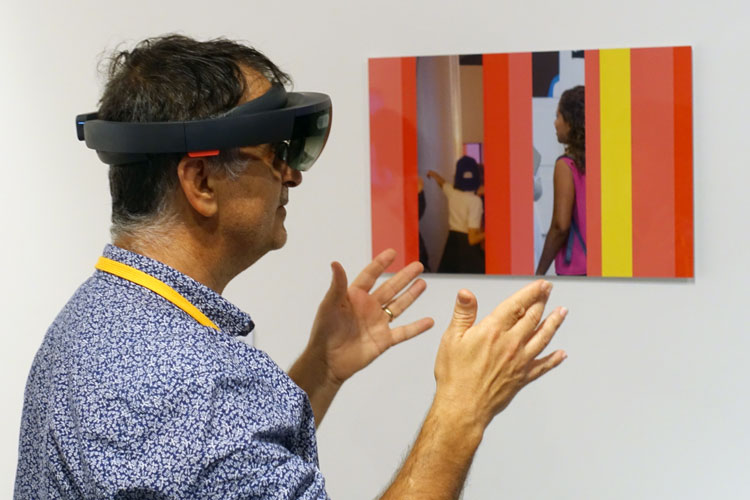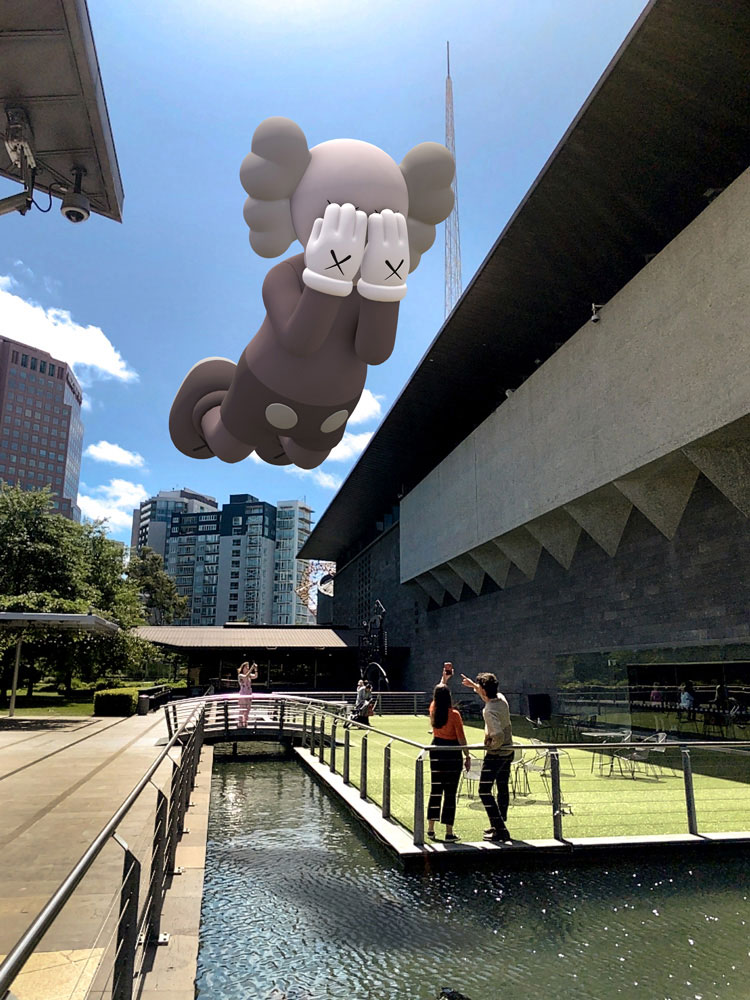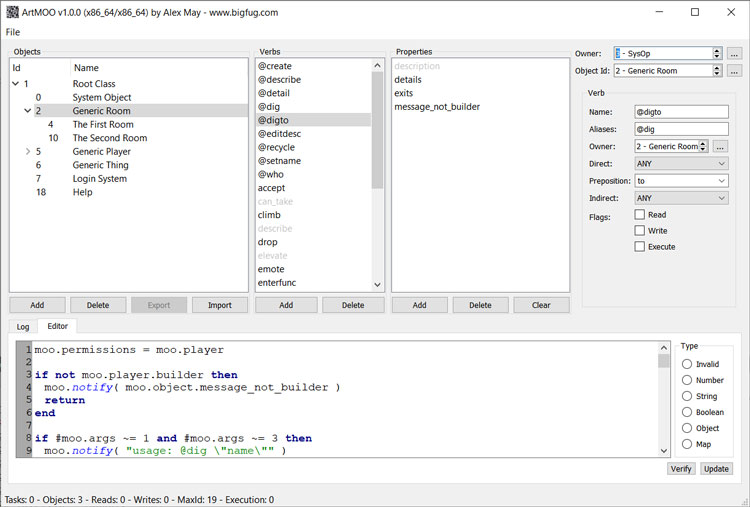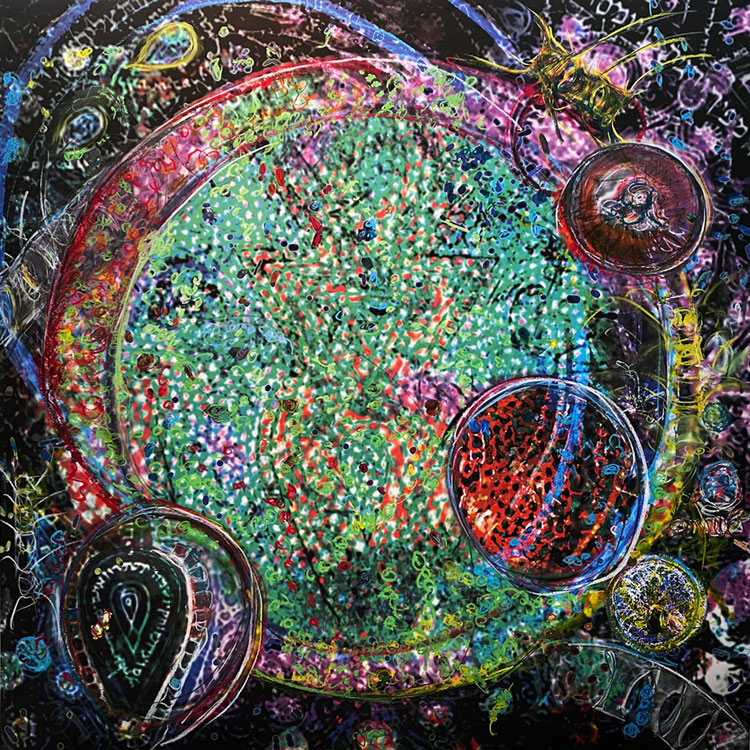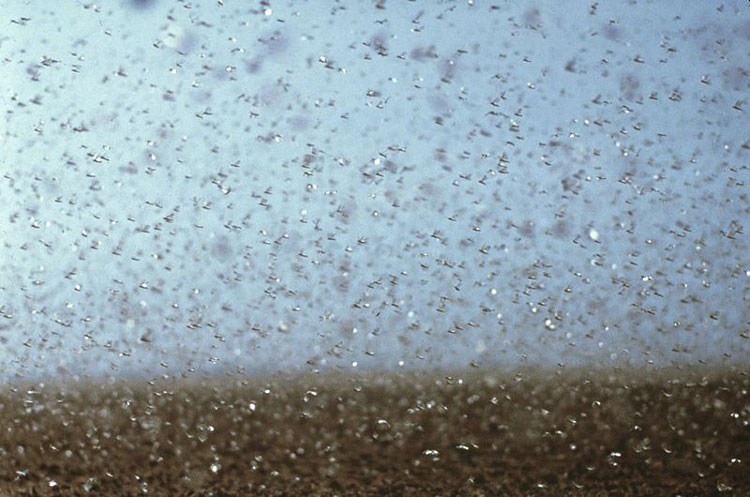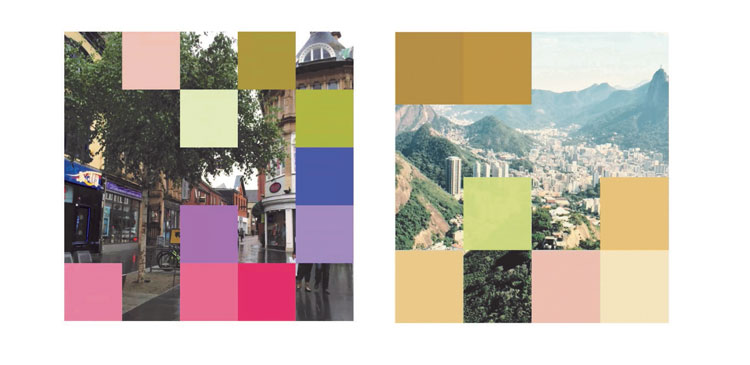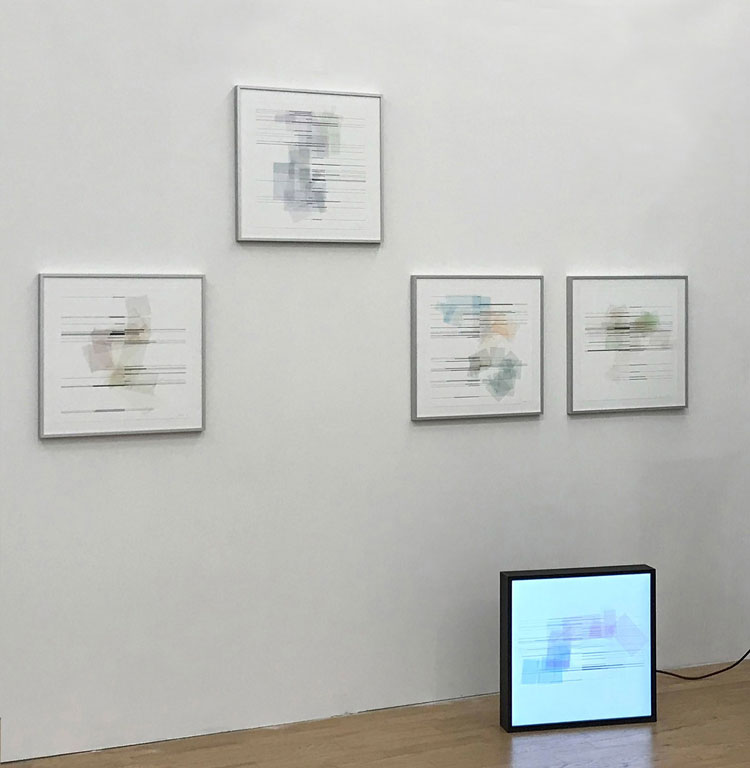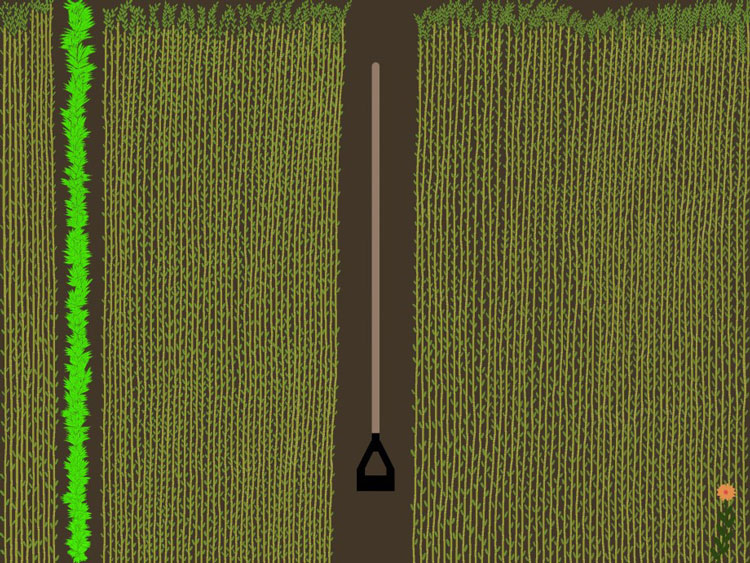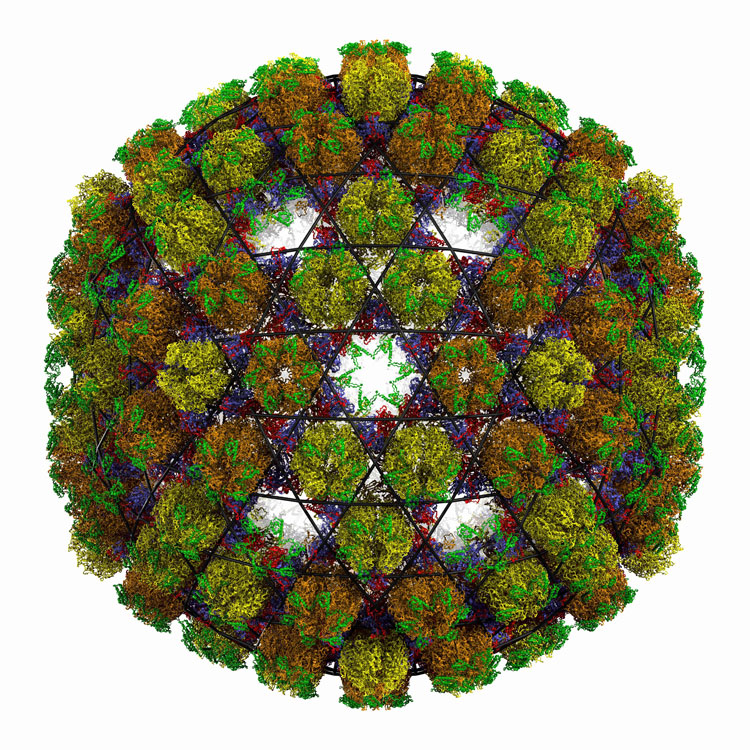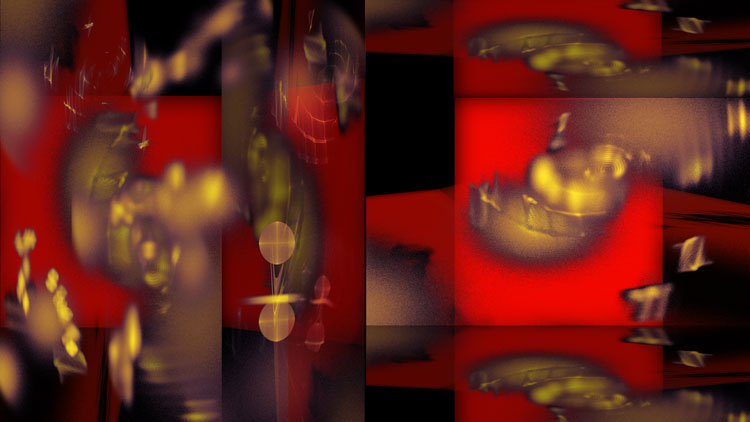

by CATHERINE MASON
It is estimated that on 1 May about a third of the world’s population was in some form of lockdown due to the global Covid-19 pandemic. In March, in an article in Garage, New York-based curators Barbara Pollack and Anne Verhallen asked How Can We Think of Art at a Time Like This? Maybe, instead, we should be asking what if we could adjust to new creative ways of doing things, to make and experience art to keep it relevant, especially at a time like this? As countries around the world start to consider post-lockdown strategies, this article proposes the role of digital art and, in particular, art made for networks as a way forward. This is a form of art that many artists believe is becoming more and more important for the time we live in.
Daily now we see on the internet, via devices in our homes, exhibitions of art that we cannot physically stand in front of. Museums and galleries have a history of being slow to adapt to new technologies, but even during lockdown, across the world it seems cultural institutions are busy creating content. Almost every day another virtual tour of an exhibition or gallery show drops in my inbox. Often, these are very good films with interesting commentary from curators and artists. I can, for example, enlarge details of famous works and tour The Night Watch with no one but my iPad for company, all admirable initiatives.
However, there is undoubtedly something missing. Clearly, we can never have the full experience when viewing such art. The scale is lost, there is no immediacy of material – surface textures are much less visible, if at all – and we can’t walk around the physical object or share its space. In short, this is art that was not intended to be seen on a screen. It gives us an entirely different kind of experience, especially with regards to colour. On a screen, we see transmitted light, whereas with a painting hanging on a gallery wall, there is reflected light, and the colours you can have in one or the other are different.
But what about making art specifically for screens? Digital art on screens and network art allow people, potentially in any geographical location, to participate through the art system, by interacting with one another via the work. This idea is a system based on the somewhat forgotten science of cybernetics and it has a history going back more than 50 years.
There have been suggestions that some museums will not survive this extended closure and, in any event, with social distancing likely to be in place for a long time to come, museums and galleries are going to have to consider how to create meaningful interactions for participants from a distance. We have heard a lot of talk about how life will never be the same again after this global lockdown. How true this proves to be will depend largely on the will of people across the world. But for museums and galleries, it is clear they will have to operate differently, at least in the medium term. Overdue, and now perhaps more timely than ever, is a forced rethink of the art world’s high-carbon, large-scale event-based lifestyle and crowded exhibitions. Manuel Borja-Villel, director of the Museo Reina Sofía in Madrid, while calling for the huge injection of cash museums will need post-pandemic, wrote in Artnet last month that we could “imagine new worlds in which caring for other people and other species should be central […] Maybe blockbuster exhibitions are over. Maybe we should think more about process and research.”
Also writing in Artnet, Daniel Birnbaum, former director of the Moderna Museet in Stockholm and current head of the augmented reality company Acute Art, argues there could be a paradigm shift: “For art institutions, the ongoing climate emergency and a changed public health landscape should not only mean doing less. It should also mean developing entirely new forms of art. Maybe in the future, virtual reality will not be shown in museums. It might very well be the other way around. What we call museums will be shown in VR.”
Artists have always been quick to adopt the latest technologies, repurposing them for creative ends. The field of cybernetics came to prominence in the 1960s and the study of how machine, social and biological systems behave offered a means of constructing a framework for art production in which artists could consider new technologies and their impact on life. Concepts of behaviour and process, media dexterity, interdependence, cooperation and adaptability began to enter art. Pioneers in this field include Roy Ascott, author of Telematic Embrace, for whom art is a system involving feedback between creator and audience.
The UK-based Computer Arts Society (an interdisciplinary practitioner-led group founded in 1968) was well aware of the “responsibility of the artist for his material and to society”, as Gustav Metzger, artist and early member wrote in 1969. CAS activities and exhibitions explored new avenues for art, informed by the field of cybernetics, using the latest digital technology. In 1970, it exhibited the collaborative work Ecogame, a multimedia simulation model of an economic system, connecting multiple players – a piece of interactive performance art and theatre. Interact: Machine, Man, Society (Edinburgh 1973), an extensive exhibition of dance, film, poetry, interactive sculpture and participatory artworks, some community led, attracted artist participation from UK, Europe, and North and South America.
In these unprecedented times, perhaps this type of transdisciplinary interactive art gives us an opportunity to bring change. There is a strong sense that audiences are looking for new experiences. The technology is well advanced and artists are able to make interactive work that is highly successful. Digital networked art can deliver interaction, communication and connection – three very important things that, as people in lockdown, we are particularly concerned with at present. A great networked art would have an abundance of what the artist Sean Clark terms “connectedness”, that the participants could experience together, albeit remotely. As the artist Ernest Edmonds says: “The artist hands over some of the decision-making to the participants and that’s all to the good.”
[image6]
Tango Apart: Moving Together (2016), a collaborative work by Clark and Edmonds, consists of an interactive digital art system that has two or more communicating parts in different locations. Edmonds explains: “Although each part is able to work independently, they also operate together, connecting the different locations and providing an aesthetic communication channel between them.” Using this system, it would be possible to incorporate any number of interacting nodes in any location that has electricity and internet access, thus bringing a community of people together. In collaboration with Damian Hills, Yi Ji and Xin Tong, Edmonds is working on a project called H Space: Interactive Augmented Reality Art, which uses a Microsoft HoloLens virtual reality headset, allowing a move from screen-based interactive art to virtual art.
A necessarily very brief rundown of a selection of projects in progress around the world by artists associated with the Computer Arts Society gives a tantalising glimpse of the possibilities of this medium.
[image7]
Manfred Mohr, a pioneer of algorithmic work, writes from his New York studio to tell me: “[As] everything around me is so quiet and calm, I have lots of time to think about 1,000 things without being pressured in any direction.” Like several other artists mentioned here, Mohr has experienced the cancellation of forthcoming exhibitions, some of which we hope are only postponed. During shutdown, he is preparing large prints of his latest work, Algorithmic Modulations, which was on view at Bitforms Gallery last year. He is also looking forward to taking part in an online visual poetry event.
[image4]
During lockdown, Cynthia Beth Rubin is producing new work, a continuation of her project with oceanographers at the University of Rhode Island, Do Plankton Have Feelings? A recent installation highlighted new ways of communicating science and developing empathy through the aesthetic of contemporary expressionism and public participation. Scientific images of micro-captures of plankton are reworked via hand and computer drawing and printing and the use of augmented reality allows the audience to interact. Rubin writes: “I am into ways of empowering people.”
[image8]
Sally Sheinman’s social media-instigated iPad drawing project What Makes You/You? continues and has now grown to more than 600 images. Sheinman makes works in response to answers received from the public to her “simple yet big question”. The works speak to the shared experience of being human. She recently completed a project with the National Museum of Justice and Nottingham Prison, England.
[image5]
Daniela de Paulis recently made the first step in a long-term project transmitting into space the recordings of signs of awareness of insects, non-human animals, plants and bacteria. In mid-April, she sent into space the neuro signals of a locust, recorded at the University of Tel Aviv, using a multidirectional radio antenna. She is artist in residence at the Dwingeloo radio telescope and this is the second phase of her inter-disciplinary project Cogito in Space, at the Dwingeldverveld National Park in the Netherlands, which asks participants to consider their relationship to the cosmos.
William Latham has been working with a multi-research team at Goldsmiths, University of London to create an interactive VR visualisation of Covid-19. This uses his Mutator system, a highly sophisticated instrument for creating evolutionary art that generates 3D forms, creating endless possibilities and variations. The team is part of the UK government’s Covid-19 Outbreak Parliamentary Expert Database – a network of researchers with expertise relevant to the disease or its impacts.
[image9]
They have made a custom real-time 3D virus visualisation engine with which viewers can explore the 3D models on screen or with a VR headset, immersing themselves in the virus and performing visualisation experiments. There is also an educational but fun game for young people for PC, smartphones and tablets about the virus. Interestingly, Latham’s original Mutator 1 work at IBM (1987-93) with Stephen Todd was an adaption of a protein model and, as such, the artist says: “The ongoing artwork is a mutating process itself!”
The film-maker Anabela Costa, has produced new work generating animation sequences with ArtiE-Fract, an experimental evolutionary software designed for exploration of the space of fractal 2D shapes, that she has been working with for some years. Due to collaboration with artists, the ArtiE-Fract system itself has evolved in order to better fit the needs of non-computer scientist users. Her current work in progress, JOYFUL, will be a 3-D spherical video for VR.
[image10]
Stan Hayward, a pioneer of computer animation, celebrating 90 years of age this year, continues with his various projects and websites aiming to get computer animation made a core subject in UK schools, afforded the same status as literacy and numeracy. He has worked with several schools and had good results in setting up a network covering youth crime and antisocial behaviour, which teaches children to make animation covering this subject. He is about to publish an update of his book Scriptwriting for Animation (first published in 1977).
[image3]
Finally, lockdown has enabled Alex May to finish off ArtMOO, his multi-user object orientated (MOO) server that he has coded to explore the creation of interactive text-only artworks. He is creating a gallery called VERB that will host exhibitions of interactive text-only artworks that people can visit virtually.
One thing this pandemic has shown us is that, like it or not, we are all already very connected, the actions of those in one country have an impact on those of another. We are all facing major climate change together and will have to find a way to deal with the fallout together. Michael Moore’s highly pertinent film Planet of the Humans was viewed more than four million times in its first week of release. There are indications that there is public appetite for change. Art that can help us to more fully realise these impacts and explore that connectedness, not to mention reach potential new audiences outside the gallery system, can only be to the good. The Tate’s director, Maria Balshaw, recently said: “We need to be amplifying our human capacity to respond to adversity creatively.” Hans-Ulrich Obrist, artistic director of the Serpentine Galleries in London, has called for a New Deal-type plan to rescue the economically hard hit arts, referring to the Public Works of Art Projects set up by Franklin D Roosevelt in the 1930s which saw thousands of artists sent out to do paid work in communities, public buildings and spaces. Combined with networked art, this would make something truly powerful.
• I would like to thank Ernest Edmonds for the initial idea and inspiration for this article: https://www.youtube.com/channel/UCB_2ljYB0lZuDB_2E4mBJFQ
Join the Computer Arts Society free at computer-arts-society.com
Lumen https://lumenprize.com/ and the Royal College of Art, London, are holding a live online event 21 May to discuss how artists are breathing new life into built environments and helping to create new communities by engaging with today’s data and technology.
